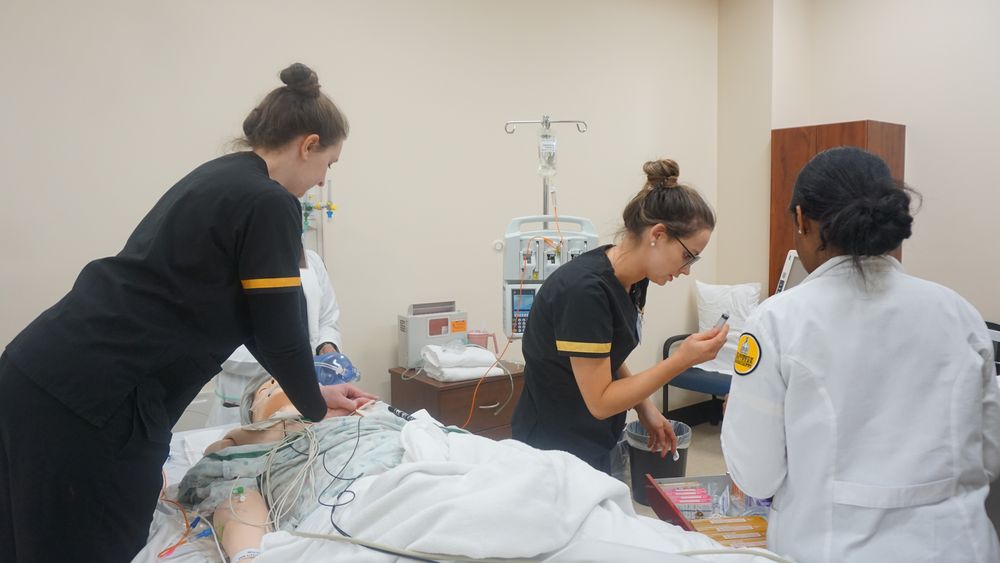Nursing Program’s Patient Simulator Lab Sees Advancements
Thu, 08/15/2019 - 04:30pm | By: David Tisdale
 “Sim Baby,” “Sim Junior” and “Nursing Anne” – the newest patient simulators in The
University of Southern Mississippi (USM) College of Nursing and Health Professions’
(CONHP) Clinical Simulation Center - can expect a diagnosis after the fall 2019 semester
begins at The University of Southern Mississippi (USM).
“Sim Baby,” “Sim Junior” and “Nursing Anne” – the newest patient simulators in The
University of Southern Mississippi (USM) College of Nursing and Health Professions’
(CONHP) Clinical Simulation Center - can expect a diagnosis after the fall 2019 semester
begins at The University of Southern Mississippi (USM).
Sim Baby allows students to study conditions in infants, with features that include pupils of the eye that react to light, and lips that turn blue in response to
decreased levels of oxygen; Sim Junior a pediatric patient simulator and Nursing Anne, an adult female simulator, allow for students to insert intravenous
tubes and feeding tubes, change wound dressings, put in catheters, among other features.
Miranda Lejarza, a USM CONHP alumna who joined the program as coordinator of the Center in 2018, said the new simulators are further evidence of the college’s commitment to provide both undergraduate and graduate level nursing students with the latest advancements in technology and quality instruction to prepare them for rewarding careers in the medical field.
“The Clinical Simulation Center provides the opportunity for our students to gain applied nursing skills in a safe environment, using simulation of medical conditions they may not be exposed to in clinicals,” Lejarza said.
USM senior nursing majors Lauren Lecompte of Poplarville, Mississippi, and Natalie Rushing of Bogalusa, Louisiana, are fourth-semester seniors in the program who have worked with the simulators as part of their coursework.
“I’ve gained more skills in the simulation center than in hospital settings,” Lecompte
said.
Standardized patients, ‘actors’ chosen from the community who follow a script of medical conditions they share with nursing students, add an even more realistic dimension to clinical training at the center.
According to CONHP faculty member Dr. Rebecca Newton, the USM nursing program has a long history of being at the forefront of simulation education, starting with the participation in the National Simulation Study conducted by the National Council for State Boards of Nursing, which lead to evidence-based support of simulation as a replacement for clinical hours.
“With acceptance of simulation as teaching pedagogy, the implementation of simulation now encompasses nursing education at all levels,” Newton said. “Nurse practitioners now utilize standardized patients for supporting their clinical practice, while nurse anesthesia students utilize simulation in the operating theater with physicians to practice safe, critical skills in a safe learning environment.”
Additionally, USM nursing programs continue to lead in technology, Newton said, as students now utilize virtual reality-based simulation programs and have live streaming video in the classroom to observe simulations in action.
Obtaining national accreditation for the simulation lab is a primary goal for the college. Dr. Kathy Masters, dean of the CONHP, has set in motion the groundwork to determine the steps to the process by creating a Simulation Committee, composed of faculty and staff, to develop goals and a timeline for achieving this benchmark.
For information about the CONHP and its programs, visit https://www.usm.edu/nursing-health-professions/index.php.